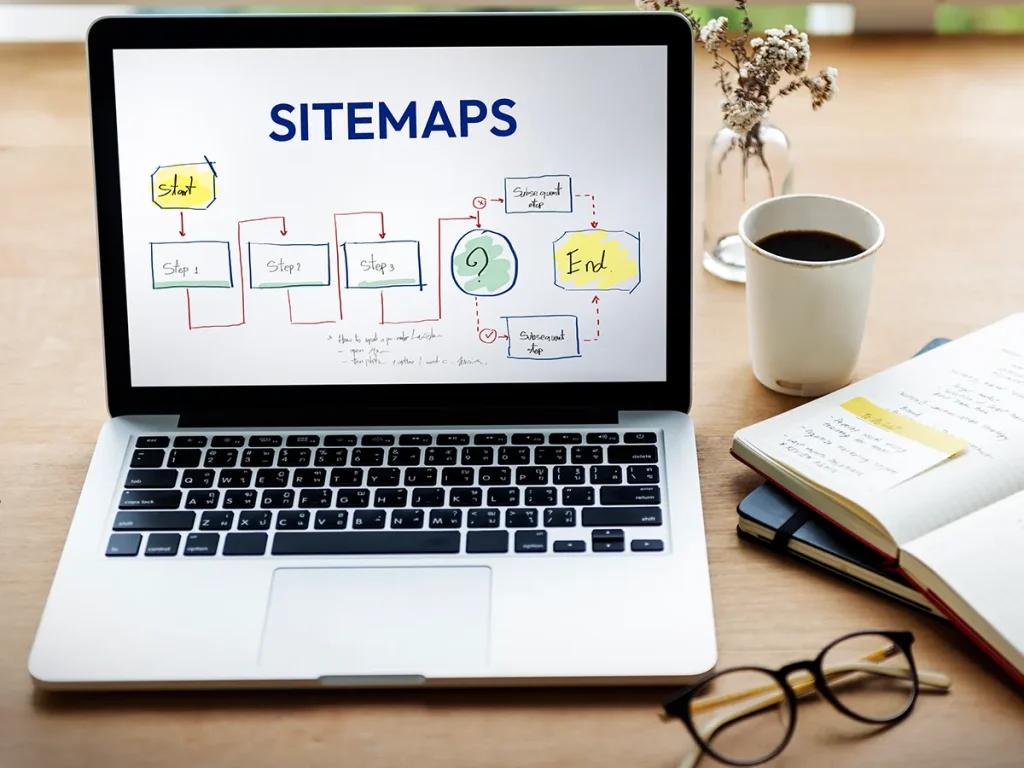
- admin
- April 3, 2025
- No Comments
Sitemap as a name suggest is a map (or a blueprint) of your site that give a sense to search engines crawlers understanding the website structure easier to which pages to index first. In a technical perspective, sitemaps are a library where a site main pages, service/product categories pages and even add-on things like videos and images are structured and organized. This, this guide is all about sitemap best practices in 2024.
Many SEO marketers struggles whether to execute sitemap on their site or not. Well, sitemap is not a vital part to put into action as having no sitemap doesn’t mean that your website cannot crawled, it will and won’t affect your SEO. So, this blog aims to inform you what is sitemap in detail, it’s types and the sitemap best practices 2024 if you really make a decision.
What is a sitemap in SEO?

A sitemap is a folder where your site pages, videos/audio files as well as news articles, PDFs and Document exist and explain the relations between them. Google search engines read this folder for site crawling. This folder or a Google sitemap let aware google which pages are important to crawl first or to rank first by giving a valuable information about these and to make sure web crawler don’t miss any pages or content when visit your site.
The sitemap SEO tells search engines about key details, like which pages are important, when they were last updated, and if there are alternate versions (like in different languages). You can also give extra information for special types of content, like you can include details like how long the video is, its rating, and if it’s suitable for certain age groups. Moreover, you can show where the important images are on your site and you can add information such as the title of the article and when it was published.
Also, whether you need a sitemap or not, depends on the following aspects:
- You will need a sitemap when your site is large or your intent to expand it with time, your website is fresh with less external linking or even backlinking to it as google won’t find your pages when no external sites links in your website pages and when you site has a ton of rich audio and video content.
- You won’t need a sitemap when your site has 500 pages or less than it, your site is strategically internally linked as Googlebot can discover all the key site pages by following links beginning from the home page and at last have less rich media files like video or audios or news pages.
Types of Sitemaps
There are two unique kinds of sitemaps: HTML and XML. Let’s discuss each.
HTML Sitemaps or Hypertext Markup Language
An HTML sitemap is a website page listing all core pages of your site. You can say it act or appear as a table of content.
HTML sitemap support search engine bots as well as viewers to right away go through the pages of your website. HTML sitemap basic focus is to give user a delightful experience when navigating the site giving an easy-to-review sketch of your website’s structure. An HTML sitemap’s URL appears like a normal webpage URL.


XML Sitemaps or Extensible Markup Language
An XML sitemap is a file where you all pages listing exist makes it feasible for crawler or bots to crawl the pages and ran them in the order of preference. Unlike HTML sitemap, XML sitemaps are coded for SERP bots rather than for users.
Beyond pages’ list, an XML sitemap structure for SEO covers other technical details using XML tags such as when the page was lasts updated, page priority against other pages using a 1-10 scale range and the how much the page content has modified.
The most impactful strategies for social media marketing include the development of shareable, compelling content and the use of appropriate hashtags for better visibility.
XML sitemap URL lookalike this “Example: https://example.com/sitemap.xml” Other sitemaps such as video sitemaps, audio sitemaps and news site map also exist to help google learn video, audio content and explore content on websites that are accepted for Google News.
Why are Sitemaps Important?

During your website crawl by bots, the crawlers follow links to find pages. But sometime the smaller or less accessible parts can be ignored. This is especially for those whose site structure is complex or large.
So, in this regard as we discussed sitemap make your site SEO easy for ranking. Having a sitemap, you are basically offering search engine crawlers a directory that ca be easily reviewed for understanding you site and crawl and rank it.
As an example you may operate an ecommerce store with 3, 00, 000 pages. In this you need to sure that your internal linking is done perfectly along with a mass of external links, otherwise Google’s needs to struggles in getting all of those pages. That’s where SEO sitemaps come in.
Best Practices to Optimize Your Sitemaps for SEO
Now let’s understand the sitemap best practices on 2025.
Submit Your Sitemap to Google
This among many sitemap best practices is for those who haven’t created and are in the intention to do so. First create a sitemap. You can go for WordPress where you can get ready-made sitemap from Yoast extension which lets your sitemap update automatically or dynamic sitemap. This means when you add any new content, or new page, a link to that page is added by itself to your sitemap file. Other than yoast, you can also go for ‘Google XML Sitemap’s for sitemap creation.
In case you don’t use a WordPress, then you can use a third-party sitemap maker tool such as XML-Sitemaps.com.

This tool will generate an XML sitemap file for you, and you can use it as your website’s sitemap. Just enter Your Website URL, after that the tool automatically generate the sitemap. Then, download the XML File. Upload the XML file to the root directory of your website (usually through your hosting provider or File Transfer Protocols). You can now submit your sitemap to search engines like Google using tools like Google Search Console.

Give legible score to Your Webpages
Always give priority to your site pages. Google sitemap protocol lets you rank your site pages with a score range in between 0.1 and 1. The high the number the higher the changes your pages will be crawled.
Try give your dynamic page a higher number as you will update here the content most often. For instance, you blog is a place where you update the content most often so give it high score. Likewise, pages such “about us” or a “contact us” have updated once in a blue moon, give it a lower score. So in your sitemap best practices avoid getting indulge in a habit of giving all pages a higher score as search engines.
Like Google evaluate websites and web pages based on specific algorithms and criteria rather than personal opinions or emotions. So, giving all your webpage higher or equal score puts google bots in a tough scenario to which to give importance. Google crawlers failed to differentiate between static and dynamic pages in turn hurts your SEO.

